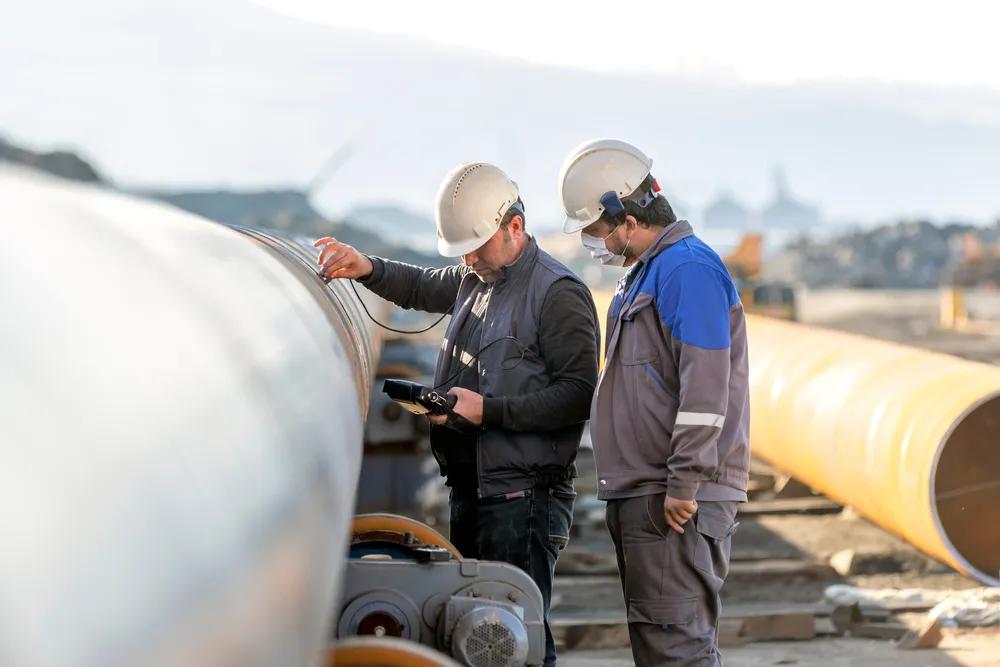Optimizing Pipes and Piping Systems Course
Introduction:
In today’s environment, the evolving trends in pipeline systems are reshaping the roles of system designers and operators. Long-term operation of piping systems benefits from the valuable input of operators, which helps refine design. However, challenges arise, particularly when systems are expanded or made more complex.
The design and installation of piping systems must consider numerous factors to ensure smooth and efficient operation. Over recent decades, advancements in pipeline systems and technologies have significantly increased the pace of development in design, operation, and automation. Modern systems have seen improvements in flow rates, pipe diameters, and operating pressures, accommodating a wide range of fluids, including complex ones.
These advancements demand meticulous design, precise operation, and effective control. Pipeline operation engineers and managers must understand fluid flow principles and modern technologies to make informed decisions about system design and future operations. Ongoing monitoring, centralized control, and sophisticated systems are essential for addressing environmental and safety concerns.
Objectives:
Upon completing the Optimizing Pipes and Piping Systems course, participants will be able to:
- Describe the development and standards for pipeline inspection.
- Understand the functional and constructional features of piping systems used in process and chemical engineering.
- Apply design methodologies for hydraulics and mechanics that meet international standards and codes.
- Explore methodologies for selecting and estimating costs of pipeline systems to achieve optimization.
- Use methods to investigate and determine the extent of pipeline deterioration.
- Identify strategies for enhancing the efficiency of piping systems.
Training Methodology:
- Interactive lectures
- Case studies
- Group discussions
- Technical workshops
- Hands-on simulations
- Problem-solving exercises
- Expert guest presentations
Course Outline:
Unit 1: Overview of Piping Systems
- Distinctive features of various pipe types and sizes
- Functional and design-based classification of piping systems
- Global standards and codes for pipe design
- Key stages of design and construction of piping systems
- Fluid properties: density, viscosity, particle size, and distribution
- Static pressure, basic flows, laminar, and turbulent phenomena
Unit 2: Pressure and Velocity Distribution of Piping Systems
- Pressure drops and power requirements for fluid movement
- Basic principles of pipe selection and layout for liquids, gases, and slurries
- Calculation of minor losses in piping systems
- Mechanical design principles, pressure pipe class, and stress ratio
- Hydrotesting, acceptance test pressure, and maximum working pressure
- Construction of above-ground and underground piping installations
Unit 3: Pipelines, Pumps, and Compressors
- Pump behavior: series and parallel arrangement, cavitation concerns
- Managing large multi-pump stations and storage tanks
- Pump sizing and application-specific design
- Compressor systems: surge control, stall, and choking prevention
- Compressed air systems, including stations and gas holders
- Calculation and selection of compressors
- Managing transients in piping systems and pipe angles
Unit 4: Control Valves in Pipelines
- Process control instruments: control valves, selection, sizing, and cavitation problems
- Flow measurements and monitoring instruments
- Automation control of pipeline systems
- Principles of pipeline installation, use, and maintenance
- Pipeline inspection, examination, and testing
- Vibration of pipes, forces, and supports for pipes and pipelines
Unit 5: Operation and Maintenance of Piping Systems
- Leak detection, prevention, risk assessment, and mitigation
- Anti-corrosion and anti-erosion strategies
- Environmental threats for above and below-ground pipelines
- Modern pipeline working principles and design considerations
- Control and security measures
- Project preparatory research and economic aspects: originating and running expenditures


















